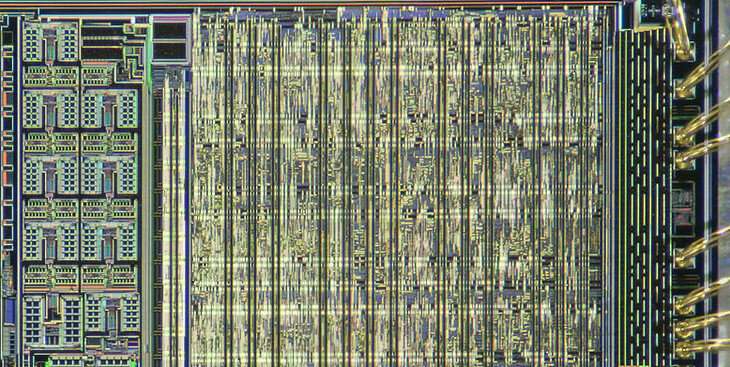
A quasi-particle that travels along the interface of a metal and dielectric material may be the solution to problems caused by shrinking electronic components, according to an international team of engineers.
"Microelectronic chips are ubiquitous today," said Akhlesh Lakhtakia, Evan Pugh University Professor and Charles Godfrey Binder Professor of Engineering Science and Mechanics, Penn State. "Delay time for signal propagation in metal-wire interconnects, electrical loss in metals leading to temperature rise, and cross-talk between neighboring interconnects arising from miniaturization and densification limits the speed of these chips."
These electronic components are in our smartphones, tablets, computers and security systems and they are used in hospital equipment, defense installations and our transportation infrastructure.
Researchers have explored a variety of ways to solve the problem of connecting various miniaturized components in a world of ever shrinking circuits. While photonics, the use of light to transport information, is attractive because of its speed, this approach is problematic because the waveguides for light are bigger than current microelectronic circuits, which makes connections difficult.
A pulse-modulated SPP wave moving right, guided by the interface of a dielectric material (above) and a metal (below), suddenly encounters the replacement of the dielectric material by air. Most of the energy is transmitted to the air/metal interface but some is reflected to the dielectric/metal interface. The video spans 120 femtoseconds.
The researchers report in a recent issue of Scientific Reports that "The signal can travel long distances without significant loss of fidelity," and that "signals can possibly be transferred by SPP waves over several tens of micrometers (of air) in microelectronic chips."
They also note that calculations indicate that SPP waves can transfer information around a concave corner—a situation, along with air gaps, that is common in microcircuitry.
SPPs are a group phenomenon. These quasi-particles travel along the interface of a conducting metal and a dielectric—a non-conducting material that can support an electromagnetic field—and on a macroscopic level, appear as a wave.
According to Lakhtakia, SPPs are what give gold its particular shimmery shine. A surface effect, under certain conditions electrons in the metal and polarized charges in the dielectric material can act together and form an SPP wave. This wave, guided by the interface of the two materials can continue propagating even if the metal wire has a break or the metal dielectric interface terminates abruptly. The SPP wave can travel in air for a few 10s of micrometers or the equivalent of 600 transistors laid end to end in a 14 nanometer technology chips.
SPP waves also only travel when in close proximity to the interface, so they do not produce crosstalk.
The problem with using SPP waves in designing circuits is that while researchers know experimentally that they exist, the theoretical underpinnings of the phenomenon were less defined. The Maxwell equations that govern SPP waves cover continuum of frequencies and are complicated.
"Instead of solving the Maxwell equations frequency by frequency, which is impractical and prone to debilitating computational errors, we took multiple snapshots of the electromagnetic fields," said Lakhtakia.
These snapshots, strung together, become a movie that shows the propagation of the pulse-modulated SPP wave.
"We are studying tough problems," said Lakhtakia. "We are studying problems that were unsolvable 10 years ago. Improved computational components changed our way of thinking about these problems, but we still need more memory."
Citation: Jumping the gap may make electronics faster (2019, September 27) retrieved 27 September 2019 from https://phys.org/news/2019-09-gap-electronics-faster.html
This document is subject to copyright. Apart from any fair dealing for the purpose of private study or research, no part may be reproduced without the written permission. The content is provided for information purposes only.
2019-09-27 06:46:54Z
https://phys.org/news/2019-09-gap-electronics-faster.html
Read Next >>>>
Bagikan Berita Ini















0 Response to "Jumping the gap may make electronics faster - Phys.org"
Post a Comment